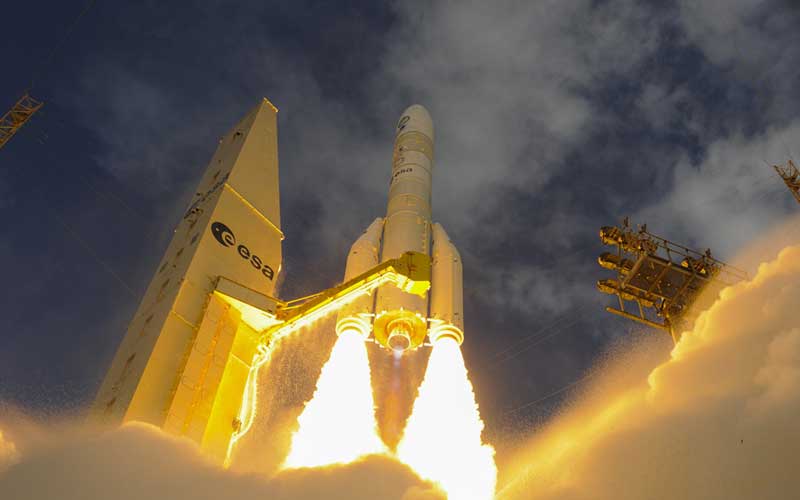
ArianeGroup announced on 12 November that the Ariane 6 upper stage had passed a series of acoustic tests to qualify it for launches aboard the rocket’s most powerful variant, which features four P120C boosters.
Ariane 6 can be launched in a two-booster (Ariane 62) or a four-booster configuration (Ariane 64). This enables a greater degree of flexibility with the rocket capable of efficiently carrying a wide range of payloads.
The rocket’s inaugural flight in July 2024 used the Ariane 62 variant, which will also be used for several of the rocket’s upcoming missions, with the next scheduled for the first quarter of 2025. The first Ariane 64 flight is planned for the latter half of 2025. In preparation for the milestone, ArianeGroup has completed several tests designed to ensure that the rocket’s upper stage can withstand the added stresses of an additional two boosters, each of which produces 3,500 kN of thrust.
The test article used to qualify the stage for use aboard an Ariane 64 flight had previously been used for the hot fire test campaign that took place at the DLR Lampoldshausen facility between 2022 and 2024. It was removed from the facility’s P5.2 test stand in September and shipped to ESA’s European Space Research and Technology Centre (ESTEC) in the Netherlands.
Testing took place in the ESTEC Large European Acoustic Facility (LEAF), where the stage underwent a series of five tests, during which it was subjected to varying acoustic levels that simulated the conditions it would encounter during an Ariane 64 launch. To accurately simulate the conditions of a launch, the stage’s tanks were filled with water and glycerine, and a mockup of the rocket’s intertank structures was employed.
In a statement published on LinkedIn, ArianeGroup explained that the testing was completed successfully.
“The success of these tests qualifies the upper stage for the Ariane 64 configuration which will begin flying in 2025, and confirms the robustness and resistance of its equipment to the acoustic waves generated by the lift-off with four boosters of 142 tons each.”




